#is delhi a union territory
Explore tagged Tumblr posts
Text
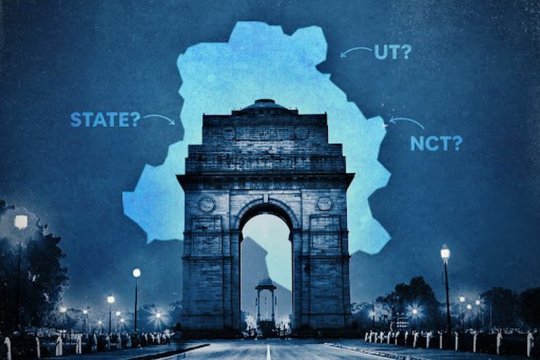
Is Delhi a Union Territory or State?
The capital of India, New Delhi, is frequently stated as "Dilwaalon ki Dilli '', an area where humans have contented hearts. Delhi has a massive range of historical and ancient artefacts. However, it's far domestic to all three branches of the Government of India, with its lengthy records of empire successions from the Delhi Sultanate to the Mughals, after which the British, the town of Gift stands as one of the quickest growing towns in the world. Delhi is cherished by the vacationers in addition to its population for it's far a town of the clever and the spice!
Is Delhi a State or Union Territory, or both?
The controversies surrounding the reputation of Delhi have left a common man scratching his head with gift AAP authorities locked in a battle towards the Center. For Delhi, they're nevertheless in a doldrum about the function of the elected Delhi Government, Lieutenant Governor, and Central Government within the management of the nation. Delhi's reputation is weird because the National Capital Territory (NCT) of Delhi has the Union Territory (UT) reputation within the selection, making strength vested with the President of India. However, in 1991, with the enactment of the 69th Amendment Act 1991, Article 239AA turned into brought, it conferred a unique provision for renaming the Union Territory of Delhi to the NCT of Delhi with the aid of vesting the executive powers inside the palms of the Lieutenant Governor. Since then, there has been confusion concerning the function and powers within the palms of Delhi's democratically elected authorities.
What makes Delhi so special?
Delhi is Popular For Red Fort. Red Fort is a remarkable fort in the city of Delhi. Street Food. Demonstrating the valor of the Indian past and archaic culture, Delhi, India, is a special World Heritage site Delhi has brilliant historical importance as an essential commercial, transport, and cultural hub, in addition to the political center of India. The capital is popular for one more aspect.
Qutub Minar
Chandni Chowk
Sansad Bhavan
Gurudwara Bangla Sahib
Lodhi Gardens
India Gate.
Delhi and its History
Delhi has been a critical town because of Mahabharata's historical time to being unbiased India's capital. Delhi has been the confluence of culture, economics, and politics, with humans from one-of-a-kind regions journeying to the town. Over the years, Delhi has been the capital of numerous kingdoms and empires; each rule impacted the town that humans need to recognize approximately. From the historic town of Indraprastha to the National Capital Territory of Delhi, the town has passed through a superb transition. Even after that, the town lives and breathes each essence of the impact left on it over the hundreds of years. Delhi on the time of Independence and after that
In 1911, the British crown shifted its administrative capital from Calcutta to Delhi; in 1927, it was renamed New Delhi, earlier than being formally inaugurated in 1931 as the brand new capital of British India. Due to geopolitical importance, it was made the capital of unbiased India in 1947; at that time, the town was referred to as the Chief Commissioner's Province of Delhi. In 1956, the National Reorganisation Act 1956 was passed, and Delhi turned into the Union Territory. The reputation of the Union Territory of Delhi was below Article 239 of the Constitution of India, with the executive strength vested within the palms of the President of India. The very last calls concerning the passage of regulation or change had been with the President primarily based totally on the recommendation of Delhi's legislative meeting, and its Council of Ministers had the proper to enact and skip legal guidelines relating majority of entries cited within the State and Concurrent List, whilst the President did now no longer want require the recommendation of the Council of Ministers.
Continue Reading...
0 notes
Text
Understanding Delhi's Status: Union Territory or State?
The status of Delhi has been a subject of confusion for many. Is it a Union Territory or a State? This blog seeks to provide an in-depth analysis of Delhi's status, its unique constitutional position, and the implications of its current status.
4 notes
·
View notes
Text
As the northern Indian region of Jammu and Kashmir heads to the polls for its first regional-level elections in nearly a decade, voters and candidates alike are still feeling the political hangover from Prime Minister Narendra Modi’s 2019 decision to revoke the region’s special autonomous status.
In August 2019, the Indian government scrapped Article 370 of the Indian Constitution, reducing the former state of Jammu and Kashmir to two union territories—Jammu and Kashmir and Ladakh—and bringing them under the direct control of New Delhi. The decision, a watershed in the region’s troubled history, sparked outrage. It also marked a shift in how India intended to govern Kashmir, which remains disputed territory with Pakistan.
Even as Jammu and Kashmir gears up to announce the winner of its legislative elections on Oct. 8, the local government will wield limited powers, constrained by a series of laws passed since 2019 that have reinforced the central government’s control over the region. Though the newly formed Jammu and Kashmir Legislative Assembly will have power to make some laws, the region will be headed still by a New Delhi-appointed governor, who wields substantial authority over public order, police, bureaucracy, anti-corruption measures, and financial matters.
The region, particularly the Kashmir Valley, has witnessed decades of violence since the 1988 insurgency that drew India and Pakistan into three wars. Since it came to power in 2014, Modi’s Bharatiya Janata Party (BJP) has asserted that its policies have brought development and democracy to Kashmir. However, people in the region have generally expressed anger over Modi’s revocation of Article 370, which consolidated power in the hands of nonlocals.
Meanwhile, other regional parties in Kashmir—including separatist groups such as Jamaat-e-Islami Kashmir (JeI), Tehreek-e-Hurriyat, and the Jammu Kashmir Liberation Front—have been banned or marginalized and many of their leaders imprisoned. The remaining dissidents in Kashmir have either changed their stance or stayed quiet out of fear of repression. Kashmiris are thus using this election season as an outlet for expressing frustration and anger by supporting local political parties or non-BJP candidates.
To New Delhi, the elections represent a chance to signal that Kashmir has moved on from its long-standing demands for azadi, or freedom, and has instead flourished in the post-2019 environment. However, many separatist groups or individuals who previously boycotted elections, including some backed by the banned JeI, are now participating. Meanwhile, mainstream Kashmiri politicians are positioning themselves as the last line of defense against what they perceive as the BJP’s attempts to reshape the region’s political dynamics, urging voters to reject Modi’s narrative and promising to restore Kashmir’s autonomy.
Kashmir kick-started its phased elections on Sept. 18, with the second round of voting taking place on Sept. 25. The third and final round of voting will take place on Oct. 1, before results are announced a week later.
There are a total of 90 seats up for grabs, but with more than 300 independent candidates out of 873 in the race, it has become one of the most unpredictable elections in Kashmir’s history. The BJP has set a goal of winning at least 30-35 of 43 seats in Jammu, while it is contesting 19 of the 47 seats in the Kashmir Valley, a Muslim-majority region where it has traditionally struggled to gain traction.
Sheikh Abdul Rashid, popularly known as Engineer Rashid, has emerged as another key figure. Rashid represents the Awami Ittehad Party (AIP) and is a two-time lawmaker from northern Kashmir who contested and won a seat in India’s parliament in June, defeating prominent figures such as former Jammu and Kashmir Chief Minister Omar Abdullah of the National Conference party and Sajad Lone, the leader of the People’s Conference party.
Rashid’s victory by a margin of more than 200,000 votes marked a shift in the region’s politics—signaling anger toward the politicians who had failed to safeguard Kashmir’s autonomy or bring about meaningful changes in their decades of rule. In the last year, Rashid’s AIP has gained traction and positioned itself as a formidable player in the regional elections. While campaigning on behalf of AIP candidates, Rashid has vehemently targeted Abdullah’s and Lone’s parties, accusing them of ganging up against him.
Rashid, who was arrested in 2019 on terrorism funding charges under India’s draconian Unlawful Activities (Prevention) Act, was recently released on interim bail. At a campaign rally in Baramulla, a town in northern Kashmir, on Sept. 13, he spoke to an energized crowd.
“[Modi’s] naya [new] Kashmir was [meant] to kill, arrest, harass, and humiliate people,” he told the gathering. “Kashmiris don’t like to throw stones, but that doesn’t mean we will surrender before your power,” he added, while his supporters cheered him on.
Rashid has promised the reinstatement of Kashmir’s autonomy, the release of all political prisoners, and the repeal of controversial laws such as the Jammu and Kashmir Public Safety Act. The campaign offers a platform that appeals to people, especially the youth, who feel that their voices have been stifled since 2019. But many of Rashid’s opponents—including Abdullah and Lone, as well as Mehbooba Mufti, another former chief minister of Jammu and Kashmir—have accused him of being an agent of the BJP.
The BJP has also been accused of supporting other political parties and independent candidates, further complicating the region’s political landscape. Another such example is JeI—which remains banned under the country’s anti-terrorism law. Though most of its leaders remain imprisoned and its assets seized, it is trying to make a comeback in this year’s elections and has demanded the suspension of its ban.
Abdullah, who was Jammu and Kashmir’s chief minister from 2009 to 2015, has voiced concerns over the proliferation of independent candidates and accused the BJP of using them to dilute the opposition’s vote. “Independent candidates are being deliberately fielded to create confusion and divide votes in critical constituencies,” he said at a recent rally. “The BJP is leaving its options open. … Voters need to be cautious. Fragmented votes will only serve to help those who do not have Jammu and Kashmir’s best interests at heart.”
To bolster its chances and stave off a BJP victory in Kashmir, the National Conference has formed an alliance with Rahul Gandhi, India’s opposition leader from the Indian National Congress party. Yet the Gandhi-Abdullah alliance’s promises to restore the region’s autonomy are viewed skeptically, even by their own supporters. New Delhi has made it abundantly clear that Article 370 will never be reinstated.
Mufti, the leader of the People’s Democratic Party (PDP) and who was chief minister of Jammu and Kashmir from 2016 to 2018, has also thrown her hat in the ring. After the 2014 elections, the PDP formed an alliance with the BJP—which has cost it support—but since 2019, the PDP has been the strongest opponent of the BJP and its policies in Kashmir. On Sept. 25, Mufti told a gathering: “Jammu and Kashmir will never have a BJP government. There will be a secular government. … PDP will be an important factor.”
Mufti’s party has also pledged to bring back statehood, revoke detention laws, and release prisoners, among other promises. Meanwhile, the BJP has continued to target both Abdullah and Mufti as “dynasts” who have kept Kashmir mired in conflict.
Though the debate over Kashmir’s autonomy has taken center stage among candidates, voters across polling stations in Kashmir are also concerned about their daily cost of living and issues such as high unemployment, increased electricity costs, limited infrastructure, and continuous detentions and police verifications.
The current political climate in Kashmir harks back to the 1970s, when Sheikh Mohammad Abdullah, then the chief minister of Jammu and Kashmir, pledged to safeguard the region’s autonomy while New Delhi’s Janata Party—a precursor to today’s BJP—led by Morarji Desai, tried to block his return to power.
Similar to the 1977 regional elections, today’s promises of autonomy now ring hollow to many residents, as successive governments have failed to preserve Kashmir’s special status. Kashmiris feel that elections have historically served as a tool to dilute their aspirations rather than fulfilling them. Manzoor Ahmad, a 49-year-old from Srinagar, voted for the first time this year. “I voted for a greater good,” he said. “We are facing lots of problems as we have been crushed. We want a local party to win to stop this.”
No matter who wins the elections, however, the new government is likely to be weak with limited powers, overshadowed by the New Delhi-appointed governor. The elections have thus become a ballot on the region’s lack of autonomy—and by extension, a test of how voters view Modi’s government.
“These election rallies have the same nomenclature as that of protest rallies in the past,” said Waheed Parra, a PDP candidate from southern Kashmir. “I see people, mostly youth, in campaigns, and it is visible they are angry. They want space to be expressed and be heard. Nobody has listened to them in the past five years.” Parra warned that if the mandate of these elections is not respected by New Delhi, the situation on the ground could turn dangerous.
The undercurrents may already exist. It appears not everyone in Kashmir is excited about the elections. Compared with the 2014 regional elections, some parts of the valley have either witnessed low voter turnout or only a slight increment. In Srinagar, for example, which is the summer capital, turnout in the second phase of voting was low, at just under 30 percent.
New Delhi has invited a delegation of 15 diplomats from foreign countries, including the United States, to observe the local elections, though many of the BJP’s opponents, including Abdullah, have questioned the visit.
Kashmir’s political future may still be fragile, but its path is being steadily reshaped by forces both old and new. As the elections progress, one thing is evident: New Delhi’s attempts to suppress dissent and tighten its grip on Kashmir over the last five years have inadvertently reignited the region’s political landscape, bringing back to the stage individuals and groups who once led mass protests and called for election boycotts. Simultaneously, the fear of continued repression has prompted many to vote, in a bid to see some change—even as the region’s underlying tensions remain unresolved.
5 notes
·
View notes
Text
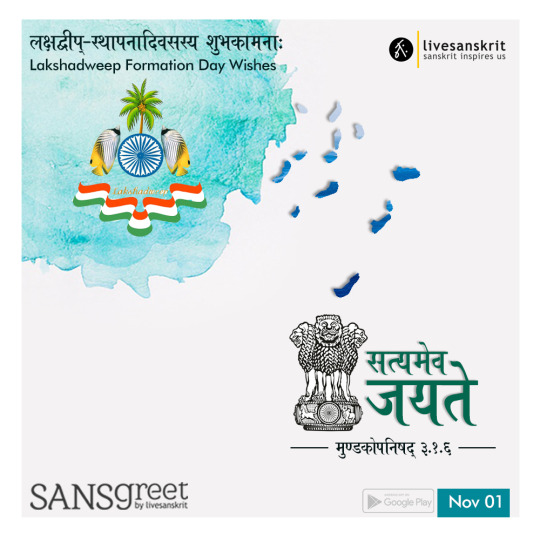
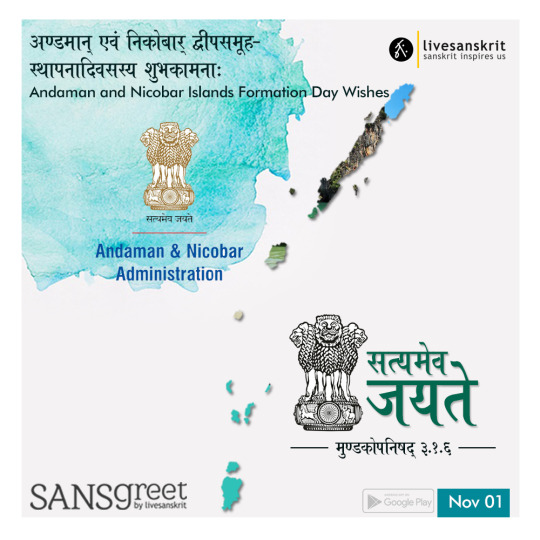
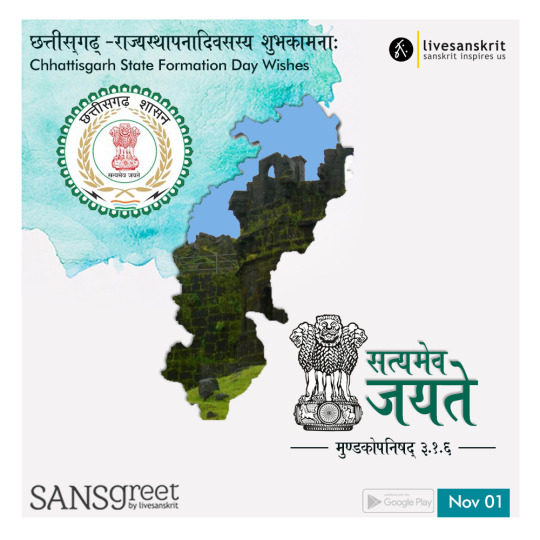
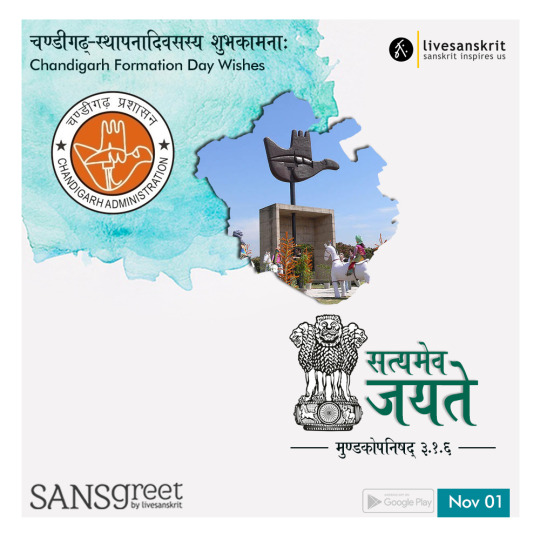

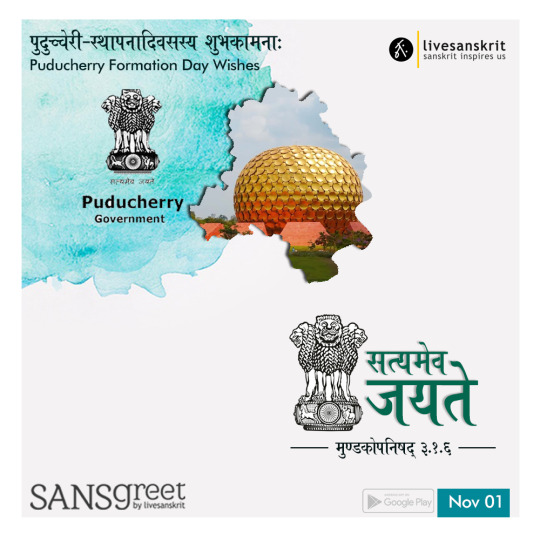
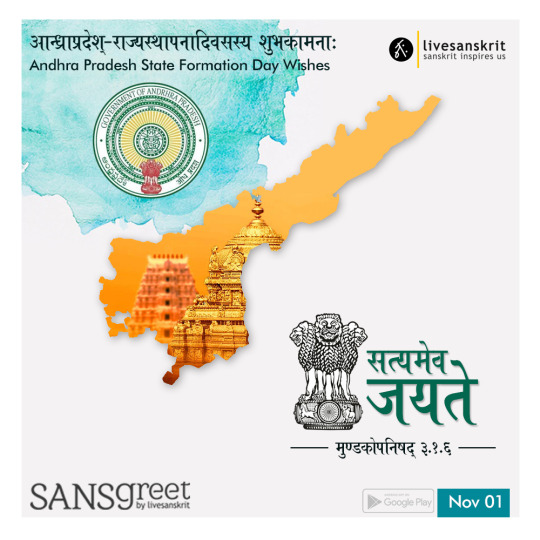
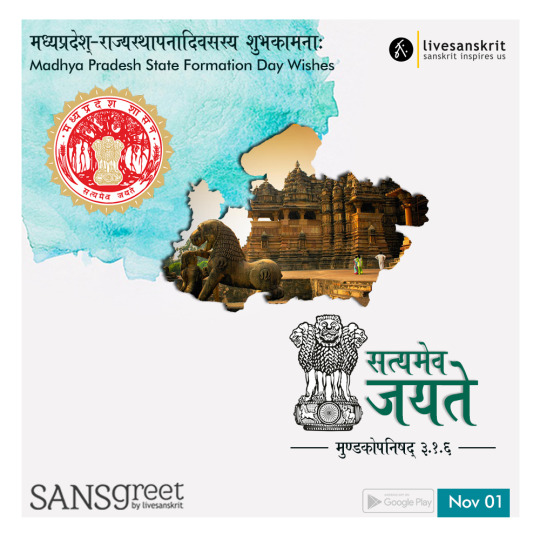
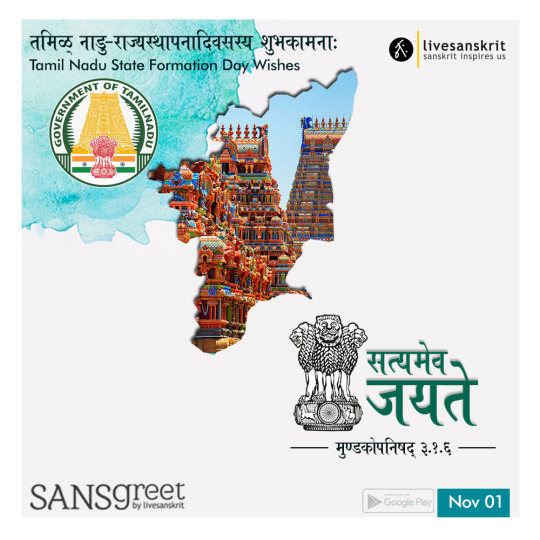
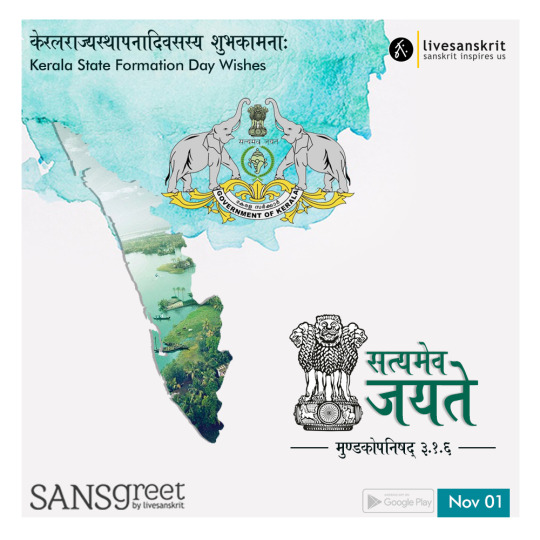
Send from Sansgreet Android App. Sanskrit greetings app from team @livesanskrit .
It's the first Android app for sending @sanskrit greetings. Download app from https://livesanskrit.com/sansgreet
On November 1, Madhya Pradesh, Karnataka, Chhattisgarh, Haryana, Punjab, Kerala, Andhra Pradesh, Tamil Nadu state are observing formation day while Delhi, Chandigarh, Puducherry, Lakshadweep and Andaman and Nicobar were given the status of union territories on this day.
#sansgreet #sanskritgreetings #greetingsinsanskrit #sanskritquotes #sanskritthoughts #emergingsanskrit #sanskrittrends #trendsinsanskrit #livesanskrit #sanskritlanguage #sanskritlove #sanskritdailyquotes #sanskritdailythoughts #sanskrit #samskrit #resanskrit #wishes #stateformationday #indianstates #southindia #northindia #westindia #eastindia #indianfestivals #northeastindia #statesofindia #celebratesanskrit #myindia #oneindia #incredibleindia
#greetingsinsanskrit#sanskritgreetings#sanskrittrends#trendsinsanskrit#livesanskrit#sanskrit#celebratingsanskrit#indianarmy#punjab#tamilnadu
10 notes
·
View notes
Text
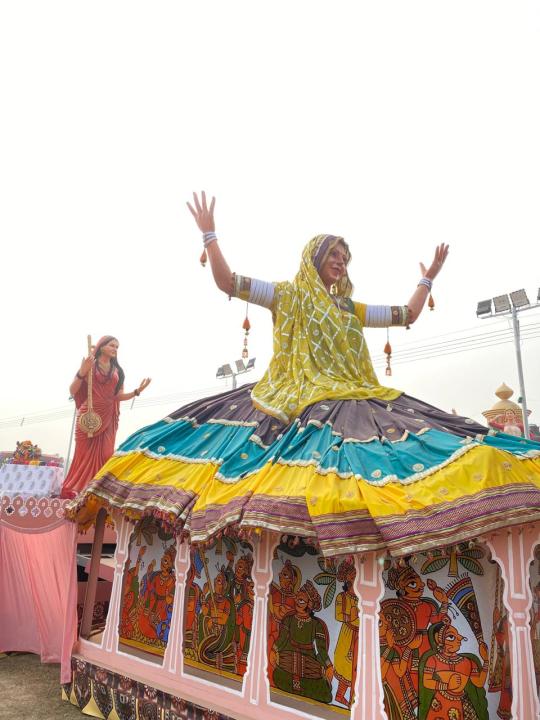
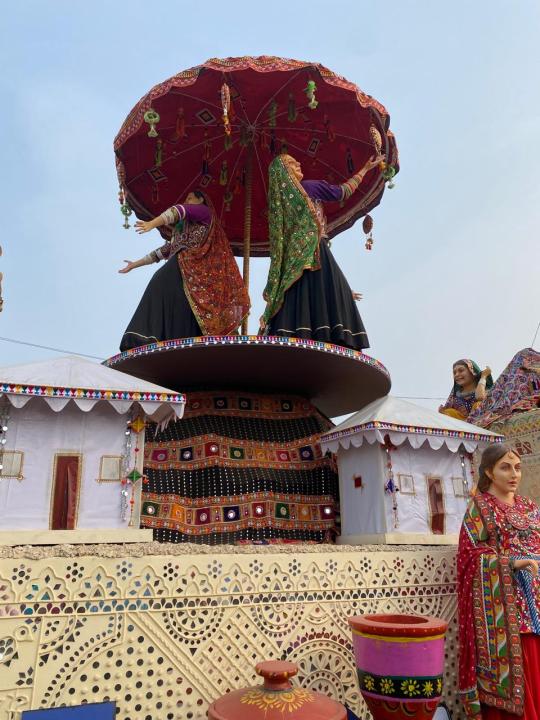
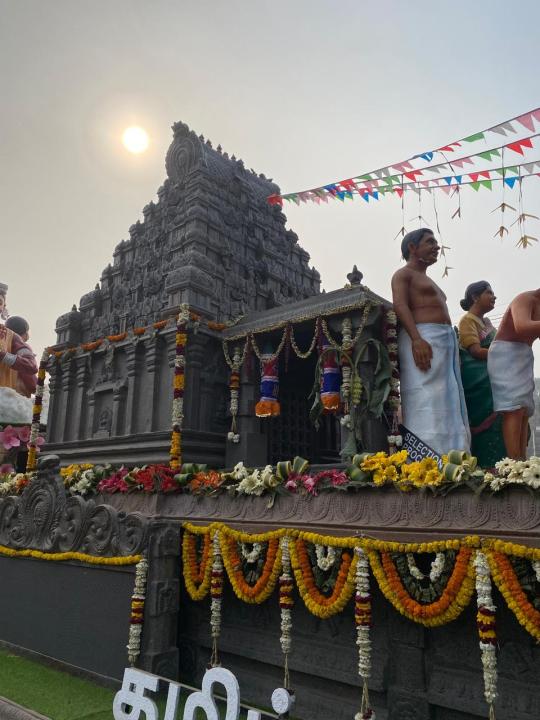
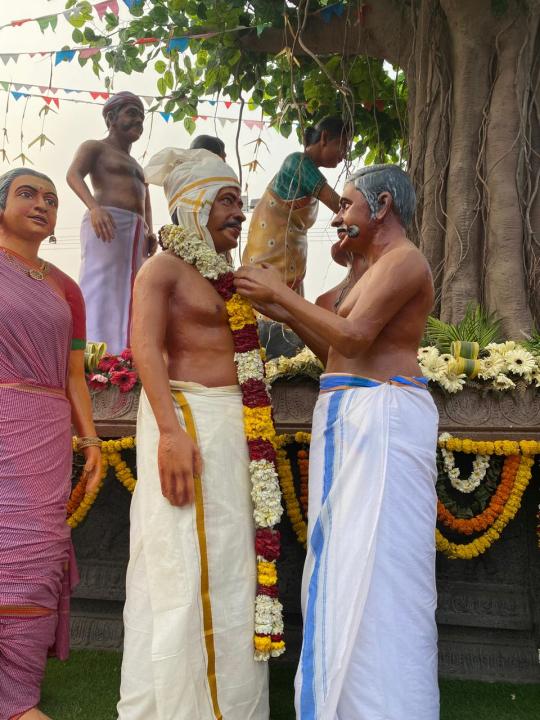
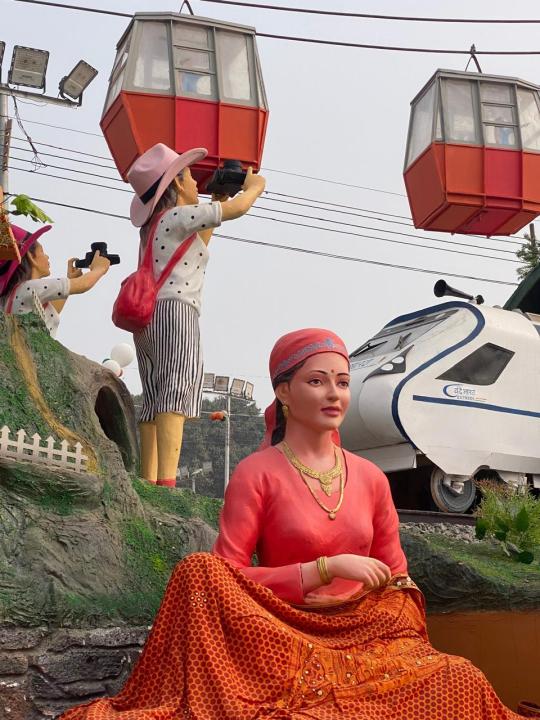
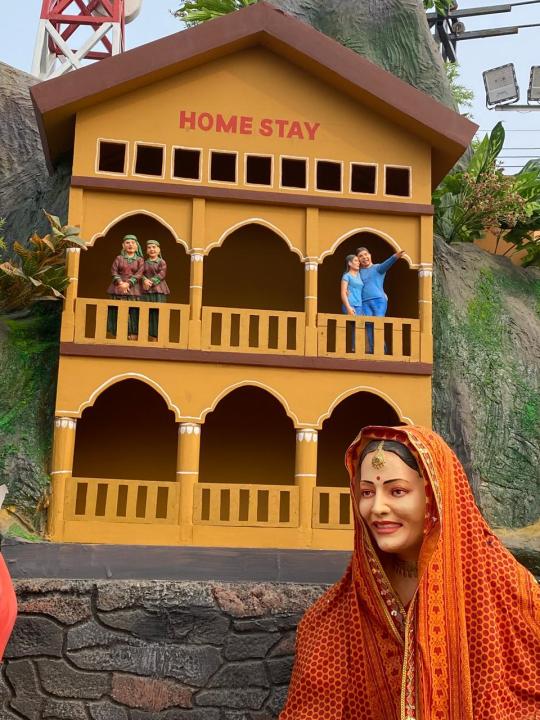


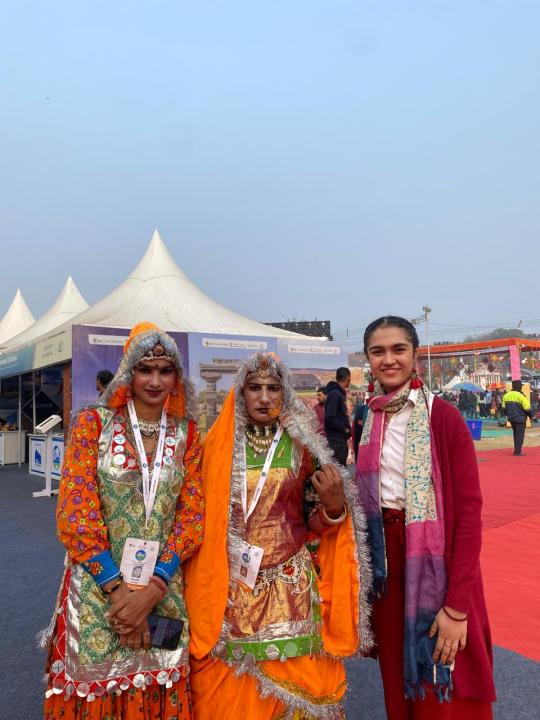
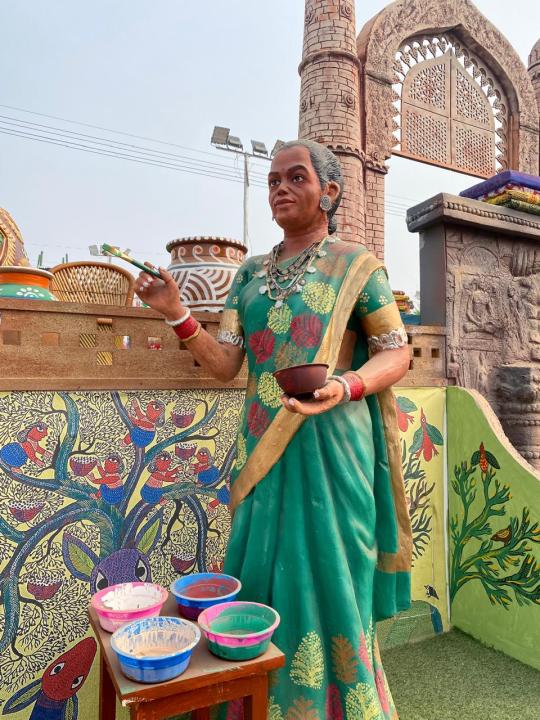
Bharat Parv 2024
Bharat Parv is an annual event organized by the Government of India to celebrate the country's rich cultural heritage, diversity, and history. The event typically takes place in New Delhi around Republic Day, which falls on January 26th. It aims to showcase various aspects of India's culture, including its cuisine, handicrafts, music, dance, and traditions.
During Bharat Parv, visitors can explore different pavilions representing various states and union territories of India. These pavilions usually feature exhibitions highlighting the unique cultural, historical, and artistic aspects of each region. Visitors can enjoy traditional performances, sample regional cuisines, and purchase handicrafts and souvenirs representing different parts of the country.
The event also includes cultural performances, folk dances, music concerts, and exhibitions showcasing India's achievements in various fields such as science, technology, and sports. Additionally, there are often competitions, workshops, and interactive sessions aimed at promoting awareness and appreciation of India's diverse heritage among visitors, especially the younger generation.
Overall, Bharat Parv serves as a platform for fostering national unity, promoting tourism, and celebrating the rich tapestry of India's culture and heritage. It attracts both domestic and international visitors and provides an opportunity for people from different backgrounds to come together and experience the vibrancy and diversity of India.
4 notes
·
View notes
Text
The Ladakh Protest: The 21-day Hunger Strike led by Sonam Wangchuk
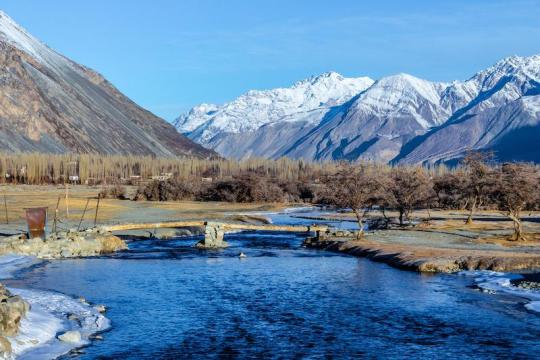
Ladakh, famously known as “Mars on Earth”, is the perfect destination where the mind slows down and the soul finds its path.
It is the northeastern Union territory of India, known for its highest mountain ranges, mesmerizing landscapes, beautiful deep valleys, crystal clear blue lakes, diverse wildlife, highest motorable mountain roads, Buddhist heritage, and the overall picturesque beauty of the place.
Ladakh: A union territory without legislature

Ladakh, which was a part of Jammu and Kashmir since 1847, was separated from Indian-administered Kashmir in 2019 and was reconstituted as a Union territory on October 31, 2019.
People of Ladakh have constantly demanded separate territory since the 1930s due to the unfair treatment of Kashmir and the prevailing cultural differences between people of Kashmir and Ladakh.
The formation of Ladakh as a separate Union territory was widely celebrated. Still, people were disappointed because it was made a UT without a legislative assembly and would have a lieutenant governor, while Jammu and Kashmir had a legislature.
What does it mean to have no legislature in Ladakh?
Unlike J&K, Ladakh cannot elect its own representative.
Ladakh will be ruled directly by the central government through a lieutenant governor as an administrator.
The President of India has the power to form rules and regulations for Ladakh, according to Article 240.
Sonam Wangchuk following his Father’s footsteps
Sonam Wangyal was born in 1925 in a small village in the Leh district of Ladakh. He worked his entire life for the rights of the people of Ladakh. He had strong secular beliefs.
He was appointed as the MLC of Jammu and Kashmir from 1957–1967 and as the MLA from 1967–1972, due to his selfless service toward the people of Ladakh.
Wangyal was also an active member in the campaign for ST status for Ladakhis, which was carried out between 1982 and 1984.
In 1984, on his five-day hunger strike, the former Prime Minister, Indira Gandhi, visited Leh and requested Wangyal to withdraw from the strike with the promise of granting the status of ST to the people of Ladakh.

Following his father’s strong morals and values and showcasing his devotion to the land and people of Ladakh, Sonam Wangchuk, a nature activist, engineer, innovator, and educationalist, began a “climate fast for 21 days” on March 6, 2024.
Why are they protesting?
The primary goal behind the protest is to raise awareness about the fragile ecosystem of Ladakh endangered by the growing industrial and developmental projects approved in New Delhi without consent, a threat posed as a result of having no legislative assembly in the Union territory of Ladakh.

The residents of Ladakh have two key demands:
Full-fledged statehood for Ladakh: the residents have demanded to elevate Ladakh’s status as a Union territory to a full-fledged state. This would enable Ladakh to have its own government and the right to form its own rules and regulations in favor of the land and people of the territory.
Integration of Ladakh in the 6th Schedule of the Constitution: The 6th Schedule aims to protect areas with tribal and indigenous populations. By including Ladakh in the 6th schedule, it would allow the state to establish autonomous districts and regional councils.
These elected bodies will have the power to administer and protect the tribal regions of the area. It would give the Ladakhis more control over water management, land use, and cultural preservation.
What is the government’s response to the ongoing protest?
Unlike the response and action taken upon the hunger strike carried out by Wangchuk’s father, the present-day government is MIA.
The current government seems unbothered by the demands and protests in Ladakh, just the way it is, and the deteriorating situation in Manipur.
The pioneers of the movement and every other active citizen in and out of Ladakh are furious about the inaction of the government and the PM, who knowingly promised in his 2019 manifesto of Lok Sabha, that Ladakh will be incorporated into the 6th schedule of the constitution. But apparently, they failed to honor their promises.

Lack of media coverage:
The lack of media coverage is infuriating for the people of Ladakh and the active citizens of India.
Although the independent media and journalists who are physically present in the ongoing protests do cover the news for the country, But it is disappointing to witness the lack of coverage by mainstream media and the big houses.
The scarcity of coverage of this major issue conceals the truth from the nation. The nation wants to know more about the concerns and affairs of the territory. Unless there is some news from the local media houses, the lack of coverage by the recognized media houses keeps the common man from knowing what is really happening there.
The current news on the Ladakh protest:
According to the current news,
Wangchuk survived solely on water and salt during the 21-day hunger strike (inspired by Gandhiji), which lasted from March 6th to March 26th.
In his speech, he talked about the “21-day fast"—that 21 days was the longest fast that Gandhiji kept during the independence movement.
Wangchuk states that the 21-day fast is over, but the protest will still continue. They will only rest when the government agrees to fulfill their demands.
Wangchuk said, “After me, women will begin a 10-day fast tomorrow. This will be followed by youth and Buddhist monks. Then it could be women, or I could come back. This cycle will go on.”
After ending his 21-day fast, Wangchuk stated “We will continue our struggle (in support of our demands). The gathering of 10,000 people at the venue and the participation of over 60,000 others over the past 20 days is a testimony of the people's aspirations.”
Conclusion:
All things considered, Ladakh, the "Land of High Passes," stands at a crossroads. While the echoes of their protests might fade from national headlines, the Ladakhi people's yearning for a brighter future persists. Whether they find resolution in the sixth schedule status or the full-throated roar of statehood, one thing is certain: Ladakh's story is far from over.
2 notes
·
View notes
Text

DREAM DESTINATION : India
India counter occupies the greater part of South Asia there is the national capital New Delhi built in the 20th century. India is made up of 28 States and Eighth Union territories Its government is a constitutional republic that represents a highly diverse population consisting of thousands of ethnic groups and hundreds of languages. India has a diverse and distinct culture that has been developing for thousands of years. In religion, India is considered the birthplace of some of the world's major religions Buddhism, Hinduism, Jainism, and Sikhism but Hinduism remains the most popular.
Being the world's second most populous nation (after China), the constitution recognizes 15 regional languages but Hindi and English are recognized as the official language. And when we are talking about a style of clothing they have colorful silk and Saris are what many can picture women wearing while men traditionally wear a Dhoti. Saris vary from 5 to 9 yards long and 2 to 4 feet and breadth, while Dhoti is an unstitched piece of clothes ranging from 4 to 5 yards in length and tied around the waist and legs. In India, they also have their own Do's and Don'ts. Some of their Do's are, to treat Indian elders with visible respect, be patient when making decisions or negotiating with your Indian counterpart, try to dress conservatively, and speak respectfully out of respect for your Indian counterpart. Indians are very forgiving towards foreigners who aren't always aware of the etiquette of Indian culture, this can help you avoid embarrassing mistakes. These are just some of their Don'ts. Start with, don't wear tight or revealing closing, don't wear your shoes inside, don't point your feet or finger at people, don't eat food or pass objects with your left hand, because the left hand is considered to be unclean in India. Don't always be polite, don't outright decline an invitation or request, don't expect people to be punctual, don't expect people to respect your personal space, don't show affection in public, don't overlook your body language, and lastly don't judge the whole country. These are the rules and regulations in India though we have our own rules and regulations we just need to follow and respect each rule, especially in India.
Indian food and spices are legendary for their medical purposes, but Indian cuisine can be difficult to adjust because they have their own version and style of cooking. Spices such as cumin, turmeric, and cardamon have been used for thousands of years. Basmati rice and pulses are staples of the Indian diet, other religious groups are vegetarian or have certain limitations, and lamb and chicken are most common for those who do eat meat. Indian food will introduce you to many flavors, tastes, and styles of cooking and the ingredients used are very different from other countries. As you travel across India you will have many options for trying authentic flavors without having to worry too much about the expenses, the local food is unique and often cheap. Accommodations in Indian homestays are available for people to rent out the vacations, they are close to nature and filled with hills or beaches. Homestays offer guests an authentic living experience and dining at a reasonable cost. Food served at homestays is delicious, homely, and at a nominal cost. Chaat, kachori, choli bhature, idli, dosa, and paratha. These are just some of the delicious dishes can enjoy in India from small-in-the-wall shops, dishing out regional specialties. The souvenirs in India make excellent holiday mementos, from traditional handicrafts to tasty spices, you simply need to take home a few unique souvenirs. Whether you are looking for something unique or just a simple memento of your trip, these souvenirs from India will give you a bit of inspiration when shopping. These are your choices to take and buy a souvenir to bring home. Start with traditional handicrafts from India, when choosing and finding a souvenir in handicraft it is important to find out the history and the meaning of the craft so that you can truly appreciate it. You can also take these souvenirs, spices from India, tea from India, a book from India, clothing from India, jewelry from India, sarees from India, paintings from India, ayurvedic products from India, and incense sticks from India, lastly, the Rajasthani textiles from India, these are the 11 souvenirs from India, choose what suits your type.
India's best place to visit are Kashmir, Kashmir which lies in the northernmost region of the country, the best time to visit Kashmir is around March to October for the green landscape and from December to February for snow. Rajasthan is one of the most culturally rich places to go in India undoubtedly Rajasthan is famous for its rich heritage, magnificent places, and insightful history. Kerala, Sikkim, and Manali are just some of the best places to visit in India for relaxation and adventures, visiting India will be memorable for you starting with the unique style of cooking, their style of dressing, and also their tradition and other things that can keep you forever, India is one of the most beautiful countries to visit.
References
Wolper Stanley. A, Srivastava.A.L, Alam Muzaffar(2023)
Geography & Travel. https://www.britannica.com/
place/India
Administrator(2014) Indian Culture and Traditions. https://
www.holbrooktravel.com/blog/cultural/indian-culture-
and-tradition
Scroope Chara(2018) Do's and Don'ts https://culturalatlas.
sbs.com.au/indian-culture/indian-culture-do-s-and-
don-ts
Cook Sharell(2019) 12 Indian Etiquette Don'ts https://www.
tripsavvy.com/indian-etiquette-donts-1539435
Gupta Sidharth Bhan(2023) Exploring Indian Food On A
Low Budget. https://www.slurrp.com/amp/article/
exploring-indian-food-on-a-low-budget-1672928512712
Philpott Victoria(2023) 11 Best Souvenirs from India to
Remember Your Trip By https://vickyflipfloptravels.com/
bes hut-souvenirs-from india/
Agarwal Kirti(2023) 22 Stunning Places to visit In India to
Rejuvenate Your Senses https://www.myholidays.com/
blog/stunning-places-to-visit-in-india/
4 notes
·
View notes
Text
[ad_1] New Delhi: Delhi recorded its coldest day in December on Friday after rains lashed the city and heavy snowfall in hills in Uttarakhand and Himachal Pradesh. Delhi also recorded highest ever rainfall in December in 15 years as the mercury dipped to 14.6 degree celsius.Meanwhile, several parts of Kashmir received fresh snowfall, many their first this season, on Friday, with a slight increase in the minimum temperatures at most places in the valley, while Rajasthan and Delhi were cold, overcast, and smitten by rain. A western disturbance brought rain to all three parts of the country, and elsewhere.Rain also lashed several places in Punjab and Haryana causing the day temperatures in both places to drop sharply. Chandigarh, which was pelted by a hailstorm, saw its maximum temperature come down to 15.9 degrees Celsius.Snowfall in Jammu and Kashmir at many places In Jammu and Kashmir, snowfall was recorded in Gulmarg, Sonamarg, Pahalgam, Gurez, Zojila axis, Sadhna Top, Mughal Road, and many areas in Bandipora, Baramulla, and Kupwara districts, weather officials said.Plains of Srinagar, Ganderbal, Anantnag, Kulgam, Shopian, and Pulwama districts, received their first snowfall this season. Snowfall led to the closure of the Srinagar-Leh Highway and the Mughal Road.Minimum temperatures falls Across Kashmir, minimum temperatures continue to settle several degrees below the freezing point, with fractional respite though on Friday.The minimum and maximum temperatures, both, have been staying below normal in the Union Territory -- an oddity for this time of the season.Low temperatures have led to the freezing of water supply lines and the forming of a thin layer of ice on the surface of several water bodies, including the Dal Lake.Srinagar recorded a low of minus 7.3 degrees Celsius Thursday night, slightly down from the previous night's minus 7 degrees Celsius, the MeT said.Gulmarg, a town known for skiing activities in north Kashmir, recorded a low of minus 6 degrees Celsius, the same as the previous night, the department added.Pahalgam, the base camp for the annual Amarnath Yatra in south Kashmir, registered a minimum temperature of minus eight degrees Celsius, slightly up from the previous night's minus 8.6 degrees Celsius.Qazigund, the gateway town to Kashmir, logged a minimum temperature of minus 6.9 degrees Celsius, while Konibal, a hamlet in the Pampore area, was the coldest recorded place in the valley at minus 9.5 degrees Celsius.Kupwara, in north Kashmir, recorded a low of minus 6.4 degrees Celsius, while south Kashmir's Kokernag, registered minus 4.8 degrees Celsius.The weather is expected to remain mainly dry from December 29-31 and light snowfall is possible at isolated places in Kashmir from January 1-5.Kashmir is currently under the grip of 'Chillai-Kalan' -- considered the harshest period of winter -- which began on December 21.Rajasthan remained in the grip of cold conditions with light to moderate rain occurring at many places, the MeT said.Dense fog engulfed many parts of the state affecting visibility.The lowest minimum temperature was recorded in Churu at 5.4 degrees Celsius.Delhi temperature slides by 9.5 degrees in a dayDelhi, which was lashed by rain since around 2.30 am, witnessed a slide of 9.5 degrees Celsius in day temperature, marking the lowest maximum temperature in the past five years in December.According to IMD, in Delhi, the lowest December temperatures in the past five years were — 15.9 degrees Celsius, 15.6 degrees Celsius, 17.8 degrees Celsius, 15.2 degrees Celsius, and 14.3 degrees Celsius.In Punjab, the maximum temperatures in Amritsar, Ludhiana, Patiala, and Pathankot were recorded at 13.7, 14.8, 14.6 and 15.2 degrees Celsius.In Haryana's Ambala, Hisar, Karnal, Rohtak, Sirsa, and Gurugram, also hit by rain, the day's highs were 14.8, 14.5, 13.4, 15.2, and 15 degrees Celsius. [ad_2] Source link
0 notes
Text
7 days of national mourning declared; state funeral for Dr. Manmohan Singh
New Delhi: The Central government on Friday announced seven days of national mourning as a mark of respect to former Prime Minister Manmohan Singh who died at the age of 92 here Thursday. A notification from the Ministry of Home Affairs issued to the chief secretaries of all the states and Union Territories stated that in view of the demise of the former Prime Minister and as a mark of respect,…
0 notes
Text
New Delhi, 25th Dec. , President Droupadi Murmu conferred the Pradhan Mantri Rashtriya Bal Puraskar to 17 outstanding children from 14 states and union territories at a prestigious ceremony held at Rashtrapati Bhavan, New Delhi. These awards celebrate exceptional achievements across categories like Art and Culture, Bravery, Innovation, Science and Technology, Social Service, Sports, and Environment. Among the honored recipients were Janani Narayanan for her exceptional musical talent, Sanchi Agrawal for her dedication to classical dance and Sanskrit recitation, and Kisen Vaniyang Veerta Dakshaniprasim for his remarkable act of bravery. The ceremony, held on Veer Baal Diwas, paid tribute to the courage and sacrifice of young heroes, adding a symbolic significance to the event. Prime Minister Narendra Modi also participated in the day’s events, emphasizing the critical role of nurturing and empowering young talent for the nation's progress. The awards underscore the importance of encouraging excellence among youth, showcasing their potential to inspire and lead the future.
0 notes
Text
J&K CM Omar Meets Shah To Discuss Early Statehood Restoration; Home Minister Reviews Security S
Jammu and Kashmir Chief Minister Omar Abdullah met with Union Home Minister Amit Shah in Delhi on Thursday with the intent of seeking an early restoration of statehood in addition to discussing a range of other key issues. This is the second time that Abdullah has held a meeting with Shah after becoming the first chief minister of the Union Territory of Jammu and Kashmir. Union Home Minister also…
0 notes
Text
Comprehensive Travel Guide to Ladakh in North India
Overview of Ladakh
Ladakh covers the far northern extent of the Indian subcontinent and is bordered by Pakistan to the west and China and Tibet to the north and east. Technically, the broader Ladakh region is also partly in Pakistan, which is known as Gilgit-Baltistan. Together, Ladakh and Gilgit-Baltistan are culturally, ethnically and historically very similar.
Ladakh was part of the former Tibetan Kingdom and is still home to a predominantly Buddhist population today. This means that the culture, language, food, atmosphere and architecture of the region are completely different to what you might find elsewhere in India.
Ladakh was also considered part of Jammu and Kashmir state in India, but since 2019, Ladakh is now a Union Territory.

When is the Best Time to Travel to Ladakh
High season runs from June to August in Ladakh. This is when the region sees its best weather with warm days and relatively mild nights. The roads are also almost guaranteed to be clear of snow during these summer months, making places easier to access.
If you want to join any tours or treks from Leh, then this is the perfect season to meet other travellers and join groups. Outside of these months it can be hard to find regular departures for tours.
The roads connecting Leh with Manali and Srinagar are usually open from April or May until September or October, depending on conditions. The Leh-Manali Road tends to open later and close earlier due to its higher elevation.
How to Get to Leh, Ladakh
Now, this is where the adventure really begins. You can reach Leh, Ladakh by road or by air. Flying is the only option available all year round, while travel by road is possible usually from May until October. There are shared and public transport options by road from either Kashmir or Himachal Pradesh.
By Air
If you’re short on time or aren’t up for many days spent doing long drives on some pretty rough roads, then flying is the better option. There are frequent flights throughout the year from Delhi to Leh. In winter, this is the only way into the region.

read more @ https://manvify.com/comprehensive-travel-guide-to-ladakh-in-north-india/
1 note
·
View note
Text
Talk of de-dollarization is in the air. Last month, in New Delhi, Alexander Babakov, deputy chairman of Russia’s State Duma, said that Russia is now spearheading the development of a new currency. It is to be used for cross-border trade by the BRICS nations: Brazil, Russia, India, China, and South Africa. Weeks later, in Beijing, Brazil’s president, Luiz Inàcio Lula da Silva, chimed in. “Every night,” he said, he asks himself “why all countries have to base their trade on the dollar.”
These developments complicate the narrative that the dollar’s reign is stable because it is the one-eyed money in a land of blind individual competitors like the euro, yen, and yuan. As one economist put it, “Europe is a museum, Japan is a nursing home, and China is a jail.” He’s not wrong. But a BRICS-issued currency would be different. It’d be like a new union of up-and-coming discontents who, on the scale of GDP, now collectively outweigh not only the reigning hegemon, the United States, but the entire G-7 weight class put together.
Foreign governments wanting to liberate themselves from reliance on the U.S. dollar are anything but new. Murmurs in foreign capitals about a desire to dethrone the dollar have been making headlines since the 1960s. But the talk has yet to turn into results. By one measure, the dollar is now used in 84.3 percent of cross-border trade—compared to just 4.5 percent for the Chinese yuan. And the Kremlin’s habitual use of lies as an instrument of statecraft offers grounds for skepticism about anything Russia says. On a litany of practical questions, like how much the other BRICS nations are on board with Babakov’s proposal, for now, answers remain unclear.
Nevertheless, at least based on the economics, a BRICS-issued currency’s prospects for success are new. However early plans for it are, and however many practical questions remain unanswered, such a currency really could dislodge the U.S. dollar as the reserve currency of BRICS members. Unlike competitors proposed in the past, like a digital yuan, this hypothetical currency actually has the potential to usurp, or at least shake, the dollar’s place on the throne.
Let’s call the hypothetical currency the bric.
If the BRICS used only the bric for international trade, they would remove an impediment that now thwarts their efforts to escape dollar hegemony. Those efforts now often take the form of bilateral agreements to denominate trade in non-dollar currencies, like the yuan, now the main currency of trade between China and Russa. The impediment? Russia is unwilling to source the rest of its imports from China. So after bilateral transactions between the two countries, Russia tends to want to park the proceeds in dollar-denominated assets to buy the rest of its imports from the rest of the world, which still uses the dollar for trade,.
If China and Russia each used only the bric for trade, however, Russia would not have any need to park the proceeds of bilateral trade in dollars. After all, Russia would be using brics, not dollars, to buy the rest of its imports. Enter, at last, de-dollarization.
Is it realistic to imagine the BRICS using only the bric for trade? Yes.
For starters, they could fund the entirety of their import bills by themselves. In 2022, as a whole, the BRICS ran a trade surplus, also known as a balance of payments surplus, of $387 billion – mostly thanks to China.
The BRICS would also be poised to achieve a level of self-sufficiency in international trade that has eluded the world’s other currency unions. Because a BRICS currency union—unlike any before it—would not be among countries united by shared territorial borders, its members would likely be able to produce a wider range of goods than any existing monetary union. An artifact of geographic diversity, that is an opening for a degree of self-sufficiency that has painfully eluded currency unions defined by geographic concentration, like the Eurozone, also home to a $476 billion trade deficit in 2022.
But the BRICS would not even need to trade only with each other. Because each member of the BRICS grouping is an economic heavyweight in its own region, countries around the world would likely be willing to do business in the bric. If Thailand felt compelled to use the bric to do business with China, Brazil’s importers could still purchase shrimp from Thai exporters, keeping Thailand’s shrimp on Brazil’s menus. Goods produced in one country can also circumvent trade restrictions between two countries by being exported to, and then re-exported from, a third country. That’s often a consequence of new trade restrictions, like tariffs. If the United States boycotted bilateral trade with China rather than trade in the bric, its children could continue to play with Chinese-made toys that became exports to countries like Vietnam and then exports to the United States.
A preview of something like the absolute worst-case scenario that could befall consumers in BRICS countries if their governments adopted “bric or bust” terms of trade comes from today’s Russia. American and European governments have prioritized Russia’s economic isolation. Nevertheless, some U.S. and European goods continue to flow into Russia. The costs for consumers are real, but not catastrophic. As officials in BRICS countries grow increasingly emphatic about their desire to de-dollarize, with today’s Russia as an upper bound of how bad it could get, the risk-reward tradeoff of de-dollarization will look increasingly attractive.
To displace the dollar as a reserve currency among BRICS, the bric would also need safe assets to be parked in when not in use for trade. Is it realistic to imagine the bric finding these? Yes.
For starters, because the BRICS run a trade and balance of payments surplus, the bric would not necessarily need to attract any foreign money at all. BRICS governments could use some combination of carrots and sticks to get their own households and firms to buy bric assets with their savings and effectively coerce and subsidize the market into existence.
But assets denominated in the bric would actually have characteristics likely to make them unusually attractive to foreign investors. Among the major drawbacks of gold as an asset class for global investors is that, in spite of its risk-reducing value as a diversifier, it does not pay interest. Since the BRICS reportedly plan to back their new currency with gold and other metals with intrinsic value, like rare-earth metals, interest-paying assets denominated in the bric would resemble interest-paying gold. That’s an unusual characteristic. It is one that could make the assets denominated in the bric attractive to investors who want both the interest-bearing property of bonds and the diversifying properties of gold.
Sure, for bric bonds to simply function as an interest-bearing version of gold, they’d need to be perceived as having a relatively low risk of default. And the debt even of sovereign governments in the BRIC countries has non-trivial default risk. But these risks could be mitigated. Issuers of debt denominated in the bric could shorten debt maturities to lower the riskiness. Investors might trust a government in South Africa to pay you back “30 from now” when the unit of time is days but not when it is years. Prices could also simply compensate investors for that risk. If market participants demanded higher yields for buying bric assets, they could likely get them. That’s because BRICS governments would be willing to pay for the viability of the bric.
The bric, to be fair, would raise a litany of thorny practical concerns. Used primarily for international trade rather than domestic circulation within any one country, the bric would complicate the job of national central bankers in BRICS countries. Creating a supranational central bank like the European Central Bank to manage the bric would also take work. These are challenges—but not necessarily insurmountable ones.
The geopolitics among BRICS members is also thorny. But a BRICS currency would represent cooperation in a well-defined area where interests align. Countries like India and China may have security interests at odds with each other. But India and China do share an interest in de-dollarizing. And they can cooperate on shared interests while competing on others.
The bric would not so much snatch the crown off of the dollar’s head as shrink the size of the territory in its domain. Even if the BRICS de-dollarized, much of the world would still use dollars, and the global monetary order would become more multipolar than unipolar.
Many Americans are inclined to lament declines in the dollar’s global role. They should think before they lament. The dollar’s global role has always been a double-edged sword for the United States. Though it does allow Washington to add sanctions to its foreign-policy toolkit, by raising the price of the U.S. dollar, it raises the cost of American goods and services to the rest of the world, decreasing exports and costing the United States jobs. But the side that cuts into America at home has been sharpening, and the side that cuts America’s enemies abroad has been dulling.
Among those who understand that the dollar’s global role comes at the expense of jobs and export competitiveness at home, at least based on comments from 2014, is Jared Bernstein, now head of the White House Council of Economic Advisors. But these costs have only grown over time as the U.S. economy shrinks relative to the world’s. Meanwhile, among the traditional benefits of the dollar’s global role is America’s ability to use financial sanctions to try to advance its security interests. But Washington sees the security interests of the United States in the 21st century as increasingly defined by competition with state actors like China and Russia. If that is correct, and if the checkered track record of sanctions on Russia is any indication, sanctions will become an increasingly ineffective tool of U.S. security policy.
If the bric replaces the dollar as the reserve currency of the BRICS, the reactions will be varied and bizarre. Applause seems poised to come loudly from officials in BRICS countries with anti-imperialist dispositions, from certain Republicans in the U.S. Senate, and from U.S. President Joe Biden’s top economist. Boos seem poised to emanate from both former U.S. President Donald Trump and the U.S. national security community that he so often feuds with. Either way, the dollar’s reign isn’t likely to end overnight—but a bric would begin the slow erosion of its dominance.
4 notes
·
View notes
Text


Send from Sansgreet Android App. Sanskrit greetings app from team @livesanskrit .
It's the first Android app for sending @sanskrit greetings. Download app from https://livesanskrit.com/sansgreet
On November 1, Madhya Pradesh, Karnataka, Chhattisgarh, Haryana, Punjab, Kerala, Andhra Pradesh, Tamil Nadu state are observing formation day while Delhi, Chandigarh, Puducherry, Lakshadweep and Andaman and Nicobar were given the status of union territories on this day.
#sansgreet #sanskritgreetings #greetingsinsanskrit #sanskritquotes #sanskritthoughts #emergingsanskrit #sanskrittrends #trendsinsanskrit #livesanskrit #sanskritlanguage #sanskritlove #sanskritdailyquotes #sanskritdailythoughts #sanskrit #samskrit #resanskrit #wishes #stateformationday #indianstates #southindia #northindia #westindia #eastindia #indianfestivals #northeastindia #statesofindia #celebratesanskrit #myindia #oneindia #incredibleindia
#greetingsinsanskrit#sanskritgreetings#sanskrittrends#trendsinsanskrit#livesanskrit#sanskrit#celebratingsanskrit#tamilnadu#punjab
2 notes
·
View notes
Text
Vishal Mega Mart’s ₹8,000-Crore IPO Opens: A Potential Investment Opportunity?
Latest News
News
Stock Market Update: Nifty 50 Movement, Trade Setup, and Top Stock Picks
News
Markets on Edge: Indian Indices Dip, Bitcoin Hits Record, and Global Trends Shape the Week Ahead
News
BlueStone Jewellery Plans ₹1,000 Crore IPO with Fresh Issue and OFS
Source: moneycontrol.com
IPO Highlights and Market Sentiment
Vishal Mega Mart, one of India’s leading hypermarket chains, launched its ₹8,000-crore Initial Public Offering (IPO) today, December 11, 2024. Backed by private equity firm Kedaara Capital, the IPO has generated significant buzz in the financial community due to the company’s strong fundamentals. Analysts have pointed out Vishal Mega Mart’s robust financial health, debt-free status, and extensive market footprint as key factors that make it an attractive investment. The IPO is open for subscription until December 13, with the price band set at ₹74-78 per equity share. The shares are scheduled to list on the NSE and BSE on December 18, 2024.
In addition to positive analyst recommendations, the IPO is commanding a strong Grey Market Premium (GMP), reflecting high investor interest. According to market trackers, Vishal Mega Mart shares are trading at a premium of ₹17, translating to an expected listing gain of nearly 22%. While GMP trends indicate sentiment, actual listing prices can vary, urging investors to remain cautious.
Analysts’ Take: Subscribe for Long-Term Gains
Several leading brokerage firms have issued “Subscribe” recommendations for the IPO. AUM Capital highlighted Vishal Mega Mart’s dominance in the organized retail sector and its advantage over unorganized competitors due to rising disposable incomes and growing consumer preference for hygienic products. “Healthy financials and a debt-free status give Vishal Mega Mart a strong edge,” the firm noted, endorsing the IPO for long-term investors.
The company operates a robust network of 645 stores across 414 cities in 28 states and two union territories, as of September 2024. It targets middle and lower-middle-income groups with a diverse product portfolio that includes apparel, groceries, electronics, and home essentials. The hypermarket chain also benefits from its digital presence through a mobile app and website. Analysts from Anand Rathi called the IPO “fairly priced” and recommended it as a long-term investment opportunity.
Delhi-based brokerage SMIFS echoed similar optimism, citing growth potential in Tier II cities and hyperlocal delivery services as key drivers of future expansion. The company plans to add 80-100 new stores in underserved markets, aiming to strengthen its presence in cities with populations over 50,000. However, diversification efforts in the western parts of the country may pose short-term risks.
Risks and Considerations
Despite the favorable outlook, potential risks merit attention. Master Capital Service pointed out that Vishal Mega Mart’s reliance on third-party vendors for manufacturing could impact operational efficiency. Additionally, a significant portion of its revenues comes from stores in Uttar Pradesh, Karnataka, and Assam, making it vulnerable to regional economic or political disruptions. These factors underline the need for cautious optimism among investors.
Incorporated in 2001, Vishal Mega Mart has established itself as a major player in the organized retail sector, catering to everyday consumer needs. While analysts see the IPO as a promising long-term investment, prospective investors should weigh the associated risks before subscribing.
#t#shopping#market#grocery#vlog#vishalmart#reliancefresh#lifestyle#vmart#abazaar#waidhan#iamneetubisht#lucknowkirasoi#customerreview#shopingtime#shoping#lifeenjoyment#enjoylife#faishonphotography#mood#raja
0 notes